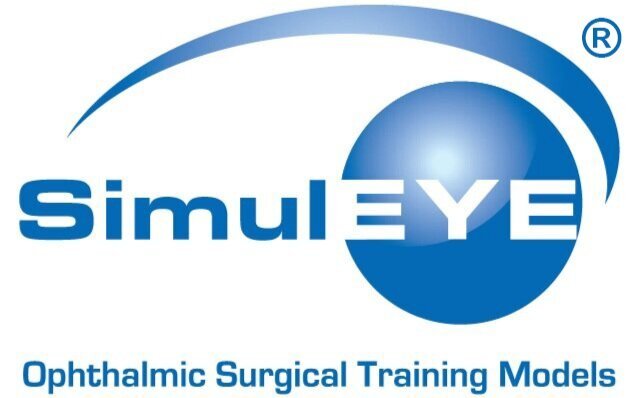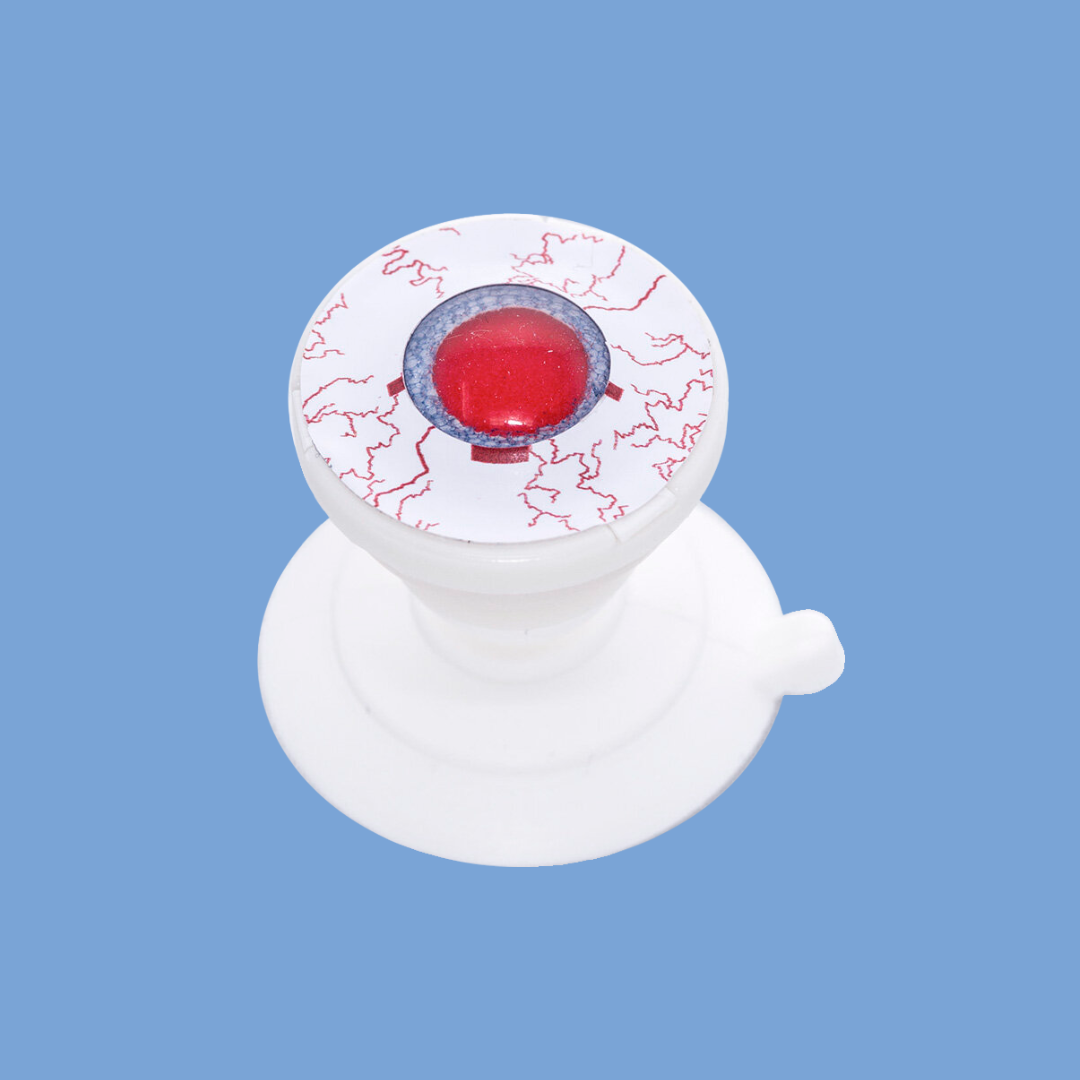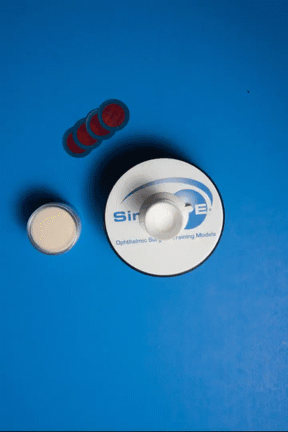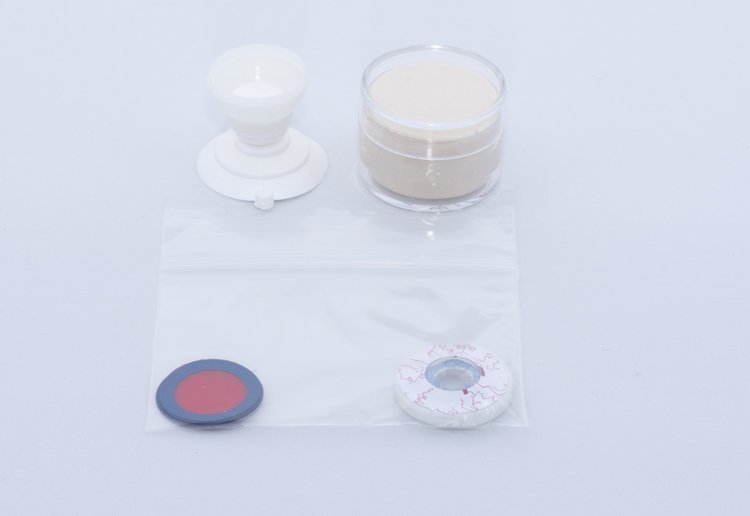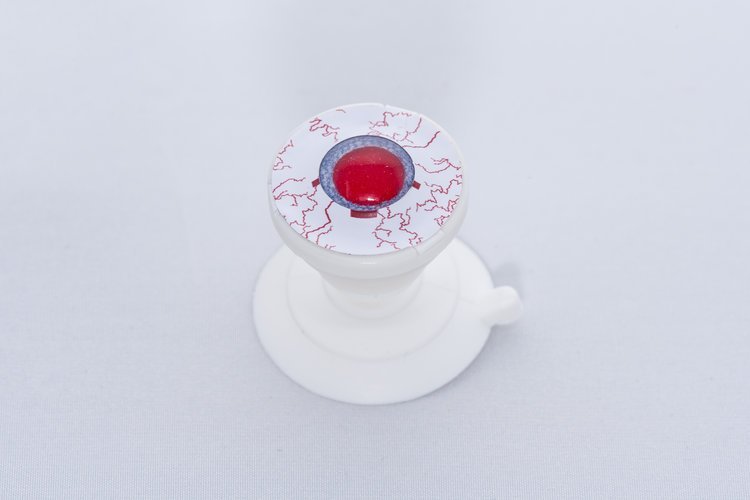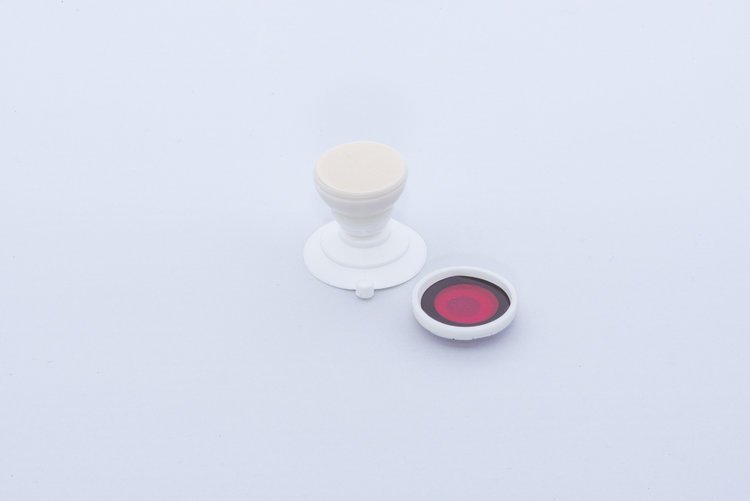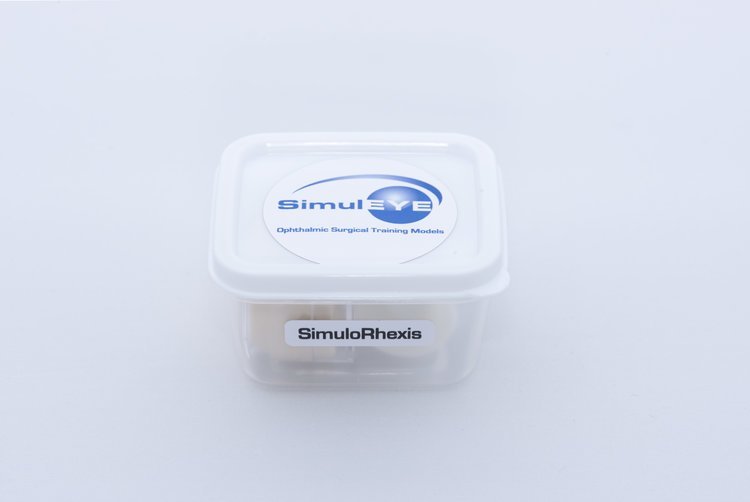SimuloRhexis®
This is the first model developed which is specifically for capsulorhexis training. A total of 5 or 10 capsulotomies can be performed with each SimuloRhexis Kit. Corneal incisions need to be made, the anterior chamber must be filled with viscoelastic and a CCC can then be created. The pressure behind the capsule can be increased for greater difficulty. The anterior capsule will bow forward causing the anterior chamber to shallow while making the tear want to run down the slope and outward. Rescue maneuvers can be practiced and perfected.
We strongly recommend purchasing the following:
Elevated Base provides a stable platform to securely hold any SimulEYE model with a suction cup base.
Base Tray in conjunction with the Elevated Base captures fluid and provides additional hand support.
Cohesive Viscoelastic Substitute to fill the eyes and provide a realistic intraocular environment or to create the sulcus and maintain space.
Please allow up to 5 business days for production (not including shipping time).
For larger orders or questions, please email Info@SimulEYE.com
CHECK OUR DISTRIBUTORS PAGE WHEN BUYING FROM OUTSIDE OF THE UNITED STATES.
This is the first model developed which is specifically for capsulorhexis training. A total of 5 or 10 capsulotomies can be performed with each SimuloRhexis Kit. Corneal incisions need to be made, the anterior chamber must be filled with viscoelastic and a CCC can then be created. The pressure behind the capsule can be increased for greater difficulty. The anterior capsule will bow forward causing the anterior chamber to shallow while making the tear want to run down the slope and outward. Rescue maneuvers can be practiced and perfected.
We strongly recommend purchasing the following:
Elevated Base provides a stable platform to securely hold any SimulEYE model with a suction cup base.
Base Tray in conjunction with the Elevated Base captures fluid and provides additional hand support.
Cohesive Viscoelastic Substitute to fill the eyes and provide a realistic intraocular environment or to create the sulcus and maintain space.
Please allow up to 5 business days for production (not including shipping time).
For larger orders or questions, please email Info@SimulEYE.com
CHECK OUR DISTRIBUTORS PAGE WHEN BUYING FROM OUTSIDE OF THE UNITED STATES.
This is the first model developed which is specifically for capsulorhexis training. A total of 5 or 10 capsulotomies can be performed with each SimuloRhexis Kit. Corneal incisions need to be made, the anterior chamber must be filled with viscoelastic and a CCC can then be created. The pressure behind the capsule can be increased for greater difficulty. The anterior capsule will bow forward causing the anterior chamber to shallow while making the tear want to run down the slope and outward. Rescue maneuvers can be practiced and perfected.
We strongly recommend purchasing the following:
Elevated Base provides a stable platform to securely hold any SimulEYE model with a suction cup base.
Base Tray in conjunction with the Elevated Base captures fluid and provides additional hand support.
Cohesive Viscoelastic Substitute to fill the eyes and provide a realistic intraocular environment or to create the sulcus and maintain space.
Please allow up to 5 business days for production (not including shipping time).
For larger orders or questions, please email Info@SimulEYE.com
CHECK OUR DISTRIBUTORS PAGE WHEN BUYING FROM OUTSIDE OF THE UNITED STATES.
Instructions:
Instructional Videos:
Check out our SimuloRhexis® Model in use! This is the first model developed which is specifically for capsulorhexis training. A total of 5 or 10 capsulotomies...
One of the most difficult steps of phacoemulsification to master is the creation of the continuous curvilinear capsulorhexis or “CCC” as pioneered by Howard Gimbel, MD, MPH, FRCSC. Occurring prior to the use of the phaco probe within the eye, the successful creation of a CCC is vital to the safety of the procedure, and the long-term stability of the lens implant within the eye. With recent advances in simulation models and techniques, it is now possible for surgeons to understand and practice the fundamental technique of CCC before ever attempting this procedure during an actual case.
